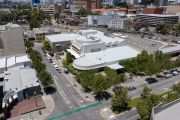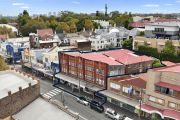
Rural values in 'holding pattern' until it rains
Rural property values are expected to remain in a “holding pattern” in 2019 “until we see more rain” according to senior rural valuer Angus Shaw.
Mr Shaw, a Victorian director at valuers Herron Todd White, said 2019 would likely be a similar year to 2018 when there were fewer sales of broadacre farms (properties bigger than 250 hectares), a lower value of deals completed and less total farming land changing hands.
Figures compiled by the valuation firm show there were just less than $6 billion worth of broadacre farm sales nationally in 2018, down about 5 per cent, with 2612 deals recorded – the lowest number in five years.
The total area of property sold measured 8.65 million hectares, a drop of about 1.2 million hectares on the previous year.
Mr Shaw said the decreased supply of land to the market had translated into improved values in 2018 despite slightly less demand than in 2017.
“Most of the good quality assets have transacted already. There’s not a lot of scale, corporate type assets available to purchase,” he said.
“Operating margins are getting squeezed because of high input costs [for feed and water]. It’s hard for valuers to justify some of the prices being paid.”
Over 2018, the strongest performing sector was wine grapes, where land values jumped 30 per cent to between $22,000 and $32,000 per hectare, according to Herron Todd White.
In the citrus sector, values rose 10 per cent, ranging from $30,000 to $50,000 per hectare with table grape values up 6 per cent to 7 per cent, above $50,000 a hectare. Values were flat for almond orchards at between $45,000 and $75,000 a hectare.
Amid the struggling dairy industry, Mr Shaw noted many farms were being repurposed to grazing or horticulture while in Victoria’s poultry industry, values fell about 25 per cent due to the sale of a number of key poultry farms with vacant possession.
A growth sector was solar and renewables, with “significant premiums being paid” for leases, he said.
Looking across the various state markets in the south-east, South Australia exhibited a strong growth in prices over 2018, while Victorian rural prices were largely static and Tasmanian prices trended down.











